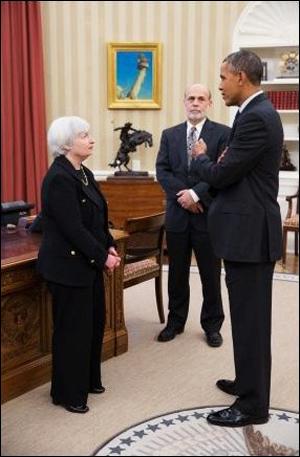Courtesy of Pam Martens.
The Federal Reserve system turns 100 this coming December 23. Today, for the first time, a woman will undergo a Senate confirmation hearing to lead the Fed – an historic first.
But gender is the last thing on anyone’s mind today when it comes to the new Fed Chairman. The Republicans are simmering over what they feel are “easy money” policies at the Fed. Wall Street will be measuring every syllable for a hint of when the Fed’s cash punchbowl of $85 billion a month in bond purchases might end. A few Democrats will delicately quiz Yellen on her views on ending too big to fail banks.
What is very unlikely to emerge amid the theatrics in the Senate Banking confirmation hearing this morning, is the most basic question of all: how did a 100-year old institution created to implement independent monetary policy in the U.S. became a regulator and examiner of banks. By its very structure, the Federal Reserve is too deeply conflicted to ethically and productively engage in this role. The fact that the Fed’s examiners were sitting in the mega banks in the years leading up to the financial collapse in 2008 but managed to miss a multitude of warning signs is a clear indictment of the Fed’s proficiency as a regulator.
The Federal Reserve Bank of New York, the most important of all the 12 regional Federal Reserve Banks, lists its core functions as follows:
- formulating and executing monetary policy
- supervising and regulating depository institutions
- providing an elastic currency
- assisting the federal government’s financing operations
- serving as the banker for the U.S. government.
It’s bullet point two in that list that is completely incompatible with the very structure of the New York Fed.
…




